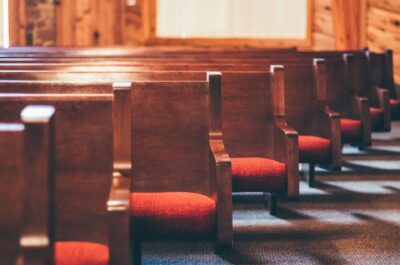Our Latest Perspectives
Know-how and Decide-what
It is a truth all but universally acknowledged—especially in small congregations—that whoever does the work should call the shots. Musicians are responsible for music, educators manage children’s programs, activists organize for social change. In the chancel, everyone defers to the altar guild. The underlying principle is clear: “Those with know-how should decide-how!”
But sometimes we go even further and let people who know how also decide what the congregation should be trying to accomplish. I want to propose an improved rule: “Those with know-how should decide-how, but everyone should have a voice when we decide-what.”
“Quiet Quitting” Comes to Church

The “Great Resignation” dominated articles regarding workplace trends for much of the pandemic. Frontline workers in high-stress occupations like hospitality, health care, and education were particularly likely to walk off their jobs. Clergy joined the trend, with nearly 40% of pastors confessing in late 2021 that they would seriously consider leaving full-time ministry.
But while The Great Resignation attracted much attention, a less obvious trend, “Quiet Quitting,” may prove to be more durable. Quiet Quitting, sometimes known as the “Great Disengagement,” occurs when employees resolve to do what they are required to do—but decline to “go above and beyond.” A worker who is Quiet Quitting may appear to be productive, but their productivity is apt to stagnate over time. In schools and universities, teachers and professors bemoan the phenomenon of disengaged students. Quiet Quitting has its religious counterpart as well, as the proportion of Americans who report they “never attend religious services“ jumped from 25% pre-pandemic to 33% more recently.
The Wrong Person in a Key Position

In “Staff Team Design for a New Era,” I wrote about the ideal staff team to meet your congregation’s future challenges. But let’s be frank: designing a new staffing structure is the easy part. The hard part comes when you realize you have the wrong player in a key position and you have to do something about that if you’re going build a better team.
What is Unique about Congregations?
Why would anyone devote time, money, or energy to a congregation when they could go for a walk in the park, spend time with family, watch a child play soccer, or make a piece of art? What is it about some congregations that makes people choose them over so many other options? What makes a congregation unique?
Pastors Stressed about Evaluation

Pastors can be in a tough spot—on the “losing” end of an evaluation process—whether they’re the evaluator or the employee. Unclear expectations and flawed accountability structures create stresses that can threaten any pastor’s ministry. Fortunately, the church can do better.
Reorganizing, Now That You’re Smaller

“We don’t have enough people to fill all of our positions.” I hear this complaint a lot, especially in congregations that are smaller than they used to be. Their official structure may call for a dozen or more boards and committees. Add it all up, and a congregation that sees 50 people on its pews feels obliged to fill up 60 or more seats around committee tables. Streamlining the official structure is a challenge, but with a clear plan and some determination, it can be done.
Life after Death for Congregations

For perhaps the first time in American history, more congregations are disappearing every year than are being born. But even in decline, some are finding new ways to serve people and communities.









